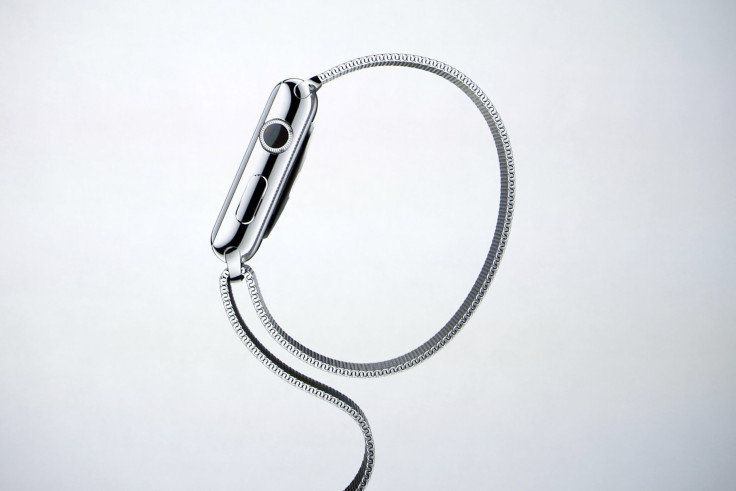Apple Watch: Can Apple Inc. Convince Us To Wear Watches Again?

The Apple Watch, unveiled in September alongside Apple Inc.’s iPhone 6 and iPhone 6 Plus, is Apple's first new product category with CEO Tim Cook at the helm. In many ways, it’s an entirely new device. In other ways, it’s a return to a fashion accessory and timekeeping tool that has been supplanted by the proliferation of the smartphone.
This leaves Apple with not one, but two tasks when it reveals more about the smartwatch on Monday. First, it has to convince consumers -- both young and old -- that wearing a watch is cool again. And second, it has to make a compelling case to purchase one. “Convincing [users] will come based on two contexts: the look and feel of the watch, followed by the applications that give us a use case,” Tim Bajarin, president and founder of Creative Strategies, said.
The question remains whether Apple can legitimize a technology product category that has been mostly seen as a gimmick until now. This isn’t the Casio calculator watch of the ’80s; the Apple Watch does much more by facilitating in-store payments with Apple Pay, app notifications, health tracking and new contextual communication methods such as taps, sketches and recorded heartbeats.
Those communication features are some of the more compelling selling points for high school and college students who increasingly prefer to use messaging apps such as Snapchat, Daniel Ladik, associate professor of marketing at Seton Hall University, said. “They’re going to have an entirely new short messaging platform on their wrists,” he added.
Apple has also partnered up with major companies, including Facebook, United Airlines and Starwood Hotels, to build apps for the watch -- not to mention the potential apps that may come from the hundreds of thousands of app creators registered under its paid developer program.
But apps and technology features are only part of Apple’s overall strategy with its smartwatch; fashion and demographic targeting are the second half. That was largely apparent during Apple’s iPhone 6 event in September, which was not only populated by attendees from the technology industry but also fashion publications such as Marie Claire.
As for actual watch wearers, Ladik noted that about a third of his undergraduate class wears a watch. Of that third, he found more women than men were sporting a watch, mostly for fashion purposes. It's a trend that has been spotted as early as 2008 in the U.K., when women increasingly opted to wear larger "men's style" wristwatches over the smaller models, according to the Independent.
Watches continue to be a huge market, with 55 percent (a slight majority) of the world still wearing one, according to a survey conducted by Business Insider. And among China's millionaires, watch companies such as Cartier and Bulgari continue to rank among top brands for gift giving, according to the Hurun Research Institute.
Last year, the smartwatch industry sold 6.8 million smartwatches globally with revenue of $1.3 billion, an 82 percent growth rate from the year before, according independent research firm Smartwatch Group. The debut of the Apple Watch is expected to drive even faster growth in the market, with estimates of $8.7 billion in revenue for 2015.
Leslie Ghize, executive vice president at the consumer culture and fashion think tank TOBE, suggested the Apple Watch is the next logical step for Apple, which became a name brand for all ages when it introduced the iPhone.
“I don’t even know if they consciously did it, but it can be argued that Apple has become a luxury brand,” she said. “The iPhone is ageless and genderless as far as I’m concerned, and I think this watch will be the exact same thing.”
Unlike other smartwatches and fitness trackers, Apple seems to have invested in changeability with its newest product. Teenagers can wear it with a baseball hat and sweatpants, or a corporate executive can show it off to his friends in the boardroom with a steel band.
“I think they made it beautifully,” Ghize said. “There will be a certain prestige to having that watch on your wrist.”
Prices for the Apple Watch will start at $349 for the aluminum sport model, a little more than the subsidized cost of a 64GB iPhone 6. And the 18-karat gold Watch Edition is likely to run anywhere between $5,000 and $10,000.
There’s a wide range of opinion regarding the Apple Watch, with analyst estimates ranging between 8 million and 30 million units in its first year. But in the meantime, Apple is expected to reveal more about the watch on Monday when it hosts its “Spring Forward” event in the Yerba Buena Center in San Francisco starting 10 a.m. PDT/1 p.m. EDT.
© Copyright IBTimes 2025. All rights reserved.




















